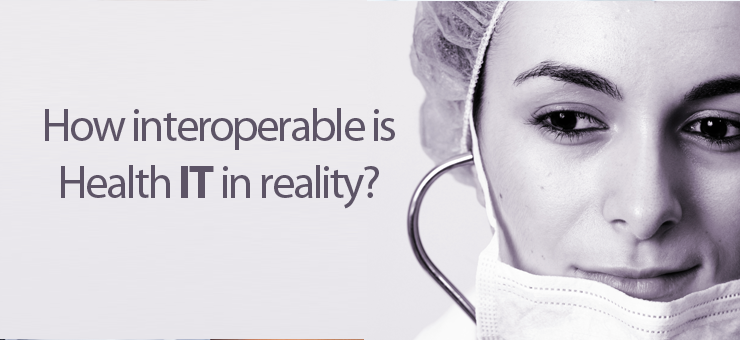Interoperability, a term commonly used in the Healthcare sector, is the ability of various systems to meaningfully interact with each other. Important patient data, integration with labs, pharmacies, hospital networks, and many other entities in the Healthcare industry benefit from Interoperability.
The Office of Standards and Interoperability (OSI) at the U.S. Department of Health and Human Services (HHS) is working to ensure the development of Health IT standards and move towards a seamless exchange of data between all stakeholders, federal/state/local governments and the private sector.
However, making the systems work with each other flawlessly is not an easy task. According to a careful estimate, thousands of programs need to work together in order to make interoperability a reality.
A solution which is completely interoperable as per industry standards is the “All-in-One” Cloud from CureMD.
Let’s go through some facts in detail.
The Software Engineering Institute’s (SEI) report on Ultra-Large-Scale systems estimates when different systems are interconnected, there is a code extending over 1 billion lines, which in itself is a huge task to manage.
In the field of Healthcare IT, there is a huge chain of software, averaging 20-30 programs, working together in any given medical center. Multiplying 20 by the number of medical centers in the country and considering small practices as well, there are thousands of programs that need to work together. So the need of the hour is not to write software that can manage all that single-handedly, but instead a complete eco-system which allows immediate exchange of information in a much more efficient way.
Interoperability is a tough ask. It is like designing a whole metropolitan city from top to bottom. The field of Healthcare IT is constantly evolving and changes are taking place every single day. The system and its development need to take into account end-users, practitioners and patients. Without considering these two entities, achieving complete interoperability will be very difficult. It is also important to understand that failures will always be there when there are so many systems involved, but it needs to quickly be able to recover from those failures.
Let’s now take a look at some numbers which will tell how exactly interoperability has played a role in the Health IT sector.
According to a research study, only 9% of hospitals had EHR software in 2008, but in the past four years, that number has gone up to 44%, showing a considerable increase. This is a clear indication hospitals are understanding the need to work with other stakeholders in a much more efficient way and the best way they can achieve that, is by implementing EHR systems.
Even amongst ambulatory physicians, the EHR adoption rate has doubled in the last 2 years.
Another reason that can be attributed to such an increase in the adoption rate is incentive payments made by the government through the Meaningful Use program. Until May 2013, 79% of eligible hospitals and 56% of eligible ambulatory providers had received some sort of incentive payments.
Another important aspect of how interoperability is being used by physicians across the country is when we look at the data of rural centers compared to urban areas. Physicians in rural areas are keeping pace with urban centers and the adoption rates are almost the same.
This goes on to show that despite the challenges interoperability presents, the Healthcare IT sector is really efficient in using technology to improve quality of patient care and it won’t be long before such systems are used by every physician in the country!

Join the Discussion!